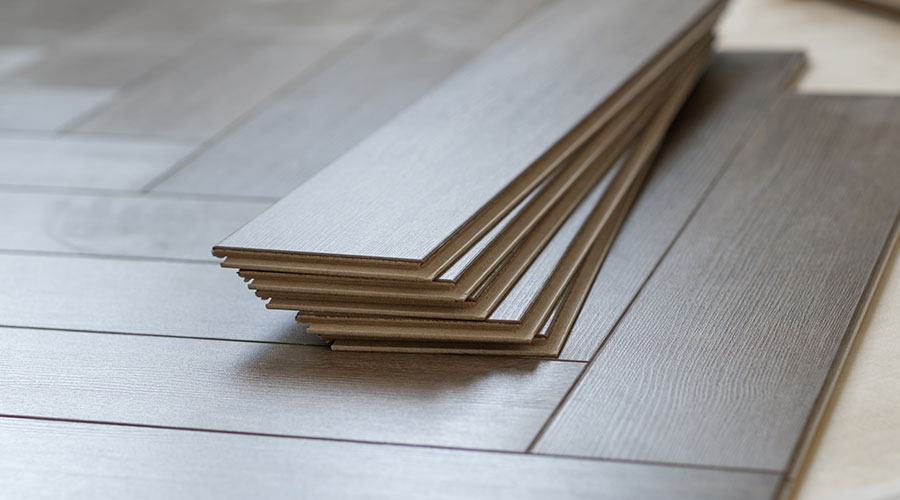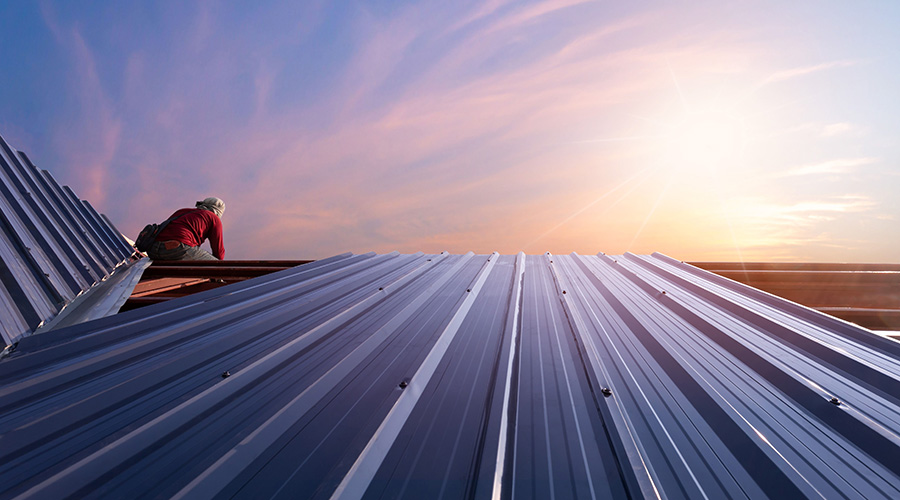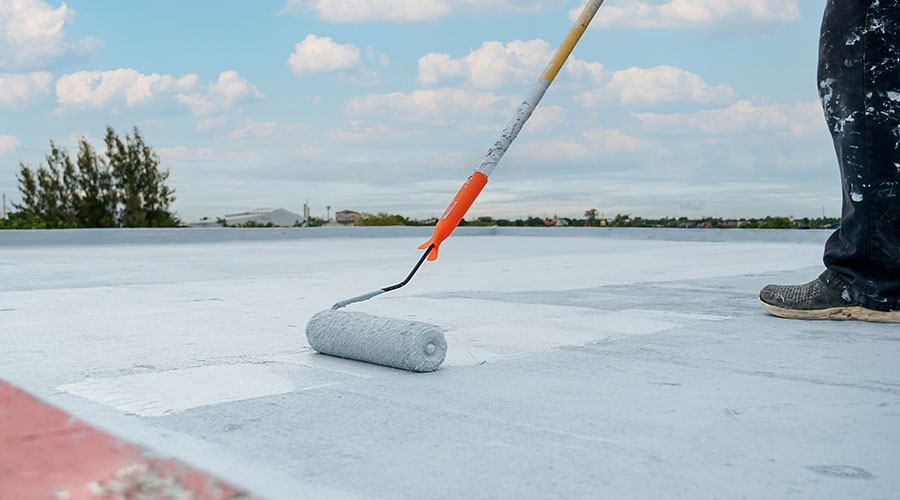Roofing
The lessons of the devastating 2004 hurricane season have meaning for facility executives all over the country.
By Greg Zimmerman, Executive Editor
With insured damage estimates soaring towards $25 billion in Florida alone, and more than 120 deaths in the Southeast, the 2004 hurricane season was one of the most devastating in U.S. history. But if anything positive can be gleaned from the destruction wrought by hurricanes Charley, Frances, Ivan and Jeanne, it’s that facility executives learned valuable lessons about facility preparedness and effective design and constructions methods — particularly in regards to roofing systems.
Many of the roofing lessons were things facility executives probably already knew. What the hurricanes did was remind them how important roofs actually are to the welfare of the facilities. And although hurricane damage was limited to mostly to the Southeast, that’s a lesson that applies to facility executives all over the country.
“It’s been several years since the last bad hurricane, so you can get complacent,” says Rodger Osborne, director of facilities for the Martin County School district, one of the areas hit hardest by Frances, and then Jeanne three weeks later. “This taught us to inspect all roof installations more closely. It’s something we just can’t take for granted.”
A roof is rarely noticed unless there is a problem, but nothing brings it to the forefront of people’s minds like a storm that damages it or blows it off altogether. Sometimes, damage caused by hurricanes is unavoidable, as when flying debris punctures the roof. More often, though, roof damage can be prevented. And the best way to avoid damage — both to the roof itself and to a facility’s interior caused by water intrusion — is to make sure the roof is installed correctly.
Lyle Hogan, principal engineer at Fincastle Engineering and a member of the Roof Consultants Institute, uses the three-legged stool as a way of explaining proper roof design and construction: The roof system must be designed correctly; the roof material selected must be appropriate for the facility and the roof structure; and the roof has to be installed to code by a contractor that is familiar with the roof system being installed. If any of the three “legs” of the stool fails, the whole thing comes crashing down — quite literally, in the case of some roofs.
Hogan says that one of the worst things a facility executive can do is select a roof based on its cost or its warranty. “The roof is a poor place to start value-engineering,” he says.
To many roofing experts, the most important lesson from the hurricanes is that time and money spent on proper roof design and construction are the best defenses against damage.
“If the roof is designed right, at least you have a fighting chance,” says Karen Warseck, president of Building Diagnostic Associates, a Hollywood, Fla.-based roof consulting firm.
Re-Coding Roofs
After Hurricane Andrew devastated south Florida in 1992, the South Florida Building Code was augmented to regulate roof construction more strictly. New requirements included more closely spaced fasteners and testing and certification by third party sources, such as Underwriters Laboratory and Factory Mutual.
“The code-mandated application requirements were never before noted on paper but were always good roofing practices,” says Warseck. “And it outlawed practices that were common but always poor.”
This code was absorbed into the entire Florida Building Code for high wind velocity areas in 2002, and many experts say roofs designed and constructed to these stricter standards are better prepared to resist hurricanes than roofs designed to prior codes.
“If a roof is installed to the new code, you’re going to do pretty well,” says Ray Nelson, director of facility planning at Florida Atlantic University.
Additionally, Warseck says, by nature some systems are simply better suited to withstand hurricane damage than others. She says that a fully-adhered system with a structural concrete deck increases the chances of the roof staying in place. Roof structures with metal decks that use point fastening loads — individual fasteners — are more susceptible to uplift in strong winds because if one fastener begins to pull out, that fastener’s load is transferred to the fasteners around it, forcing them to do more work and increasing the chances that they’ll subsequently be pulled out as well. She does emphasize, though, that metal deck systems can and do work in many situations, a point reiterated by Hogan.
“There’s a time and a place for every system,” he says. “I’ve used every possible combination of roof systems and designs at one time or another, and they’ve all worked.”
Warseck also recommends that gravel stops and copings — the metal pieces that finish the edges on flat roofs and parapets, respectively — be attached to metal cleats, which are then hooked into the building itself. The cleats give the metal edges another level of defense against wind uplift. This is important because much of the full-roof damage caused by high winds begins at the corners and edges.
“One of the biggest problems is the peeling back of the metal around the perimeter,” says Ed Williams, a Port St. Lucie, Fla.-based roof consultant. “Once that starts, the whole thing just rolls back.”
This was exactly the case on the roofs of some of the buildings in the Martin County School district, says Osborne. On both steep-sloped roofs with standing seam metal systems and flat, single-ply roofs, the corners and edges were the first to come up. On one building with a standing seam metal system, the roof was blown entirely off and damage to the building was so extensive that architects recommended razing the building and starting from scratch.
Contractors Scarce
For Osborne, as for other Florida facility executives, roof problems were compounded by the multiple hurricanes in the relatively short period of time. Many facility executives did not have time to locate a suitable contractor to repair damage caused by Frances before Jeanne hit about three weeks later.
Although finding a contractor in the days following a natural disaster is difficult anywhere, it is especially tough in Florida, a state with some of the strictest licensing and bonding requirements for roofing contractors. The stricter requirements were put in place to combat less than reputable contractors that descended upon the state after Hurricane Andrew. To prevent Floridians from being victimized by the shoddy work of these “fly-by-nighters,” contractors from other states aren’t permitted to work in Florida. They’re not even allowed to subcontract for licensed Florida contractors.
As a result, many facilities are still awaiting roofing repairs. “Jeanne caused more damage because it came along right on the heals of Frances before people really had time to fix damage,” says Warseck. “Jeanne came along and made a bad situation worse.”
Fortunately, incidents of commercial or institutional roofs blown completely off were rare, mostly because flat roofs usually withstanding uplift better than sloped roofs. The biggest problem Florida facility executives faced was really several small problems all at the same time — leaks.
Even with no visible damage to the roof, water intrusion can still result because of other design abnormalities. Mike Steger, director of physical plant services at Palm Beach Atlantic University, says that two of his newest buildings actually sustained the worst leaks. One building leaked in an area where a mansard intersected a flat wall; another took on water through its soffit vents. “In any other event, the design would have been fine,” he says.
Rooftop Equipment
Construction flaws or fastening inconsistencies are also a major source of leaks. One of the most prevalent examples is rooftop HVAC equipment that is inadequately fastened to its curbs. Hogan says he has seen badly breached roofs where the rooftop air-conditioning units had came unfastened and cartwheeled across the roof.
Williams, who has been out on more than 60 inspections since the hurricanes, has seen similar problems. “AC manufacturers need to improve fastening methods,” he says.
In addition to wayward rooftop units, other wind-blown debris was a prime culprit of roof damage. So even with the best design and construction, sometimes roofs are the victims of bad luck.
But even though such damage may be haphazard, there is still no substitute for being prepared when faced with a dangerous weather situation. As the saying goes, those that work hardest, often get luckiest.
“If your facility doesn’t have a plan, you need to get one,” says Steger. “And once you get it, make it a living document.”
Care Critical for Older Roofs
The first and most important part of preparedness, and an important lesson from the 2004 hurricane season, is that a preventive roof maintenance program is critical. While the new, more stringent roof codes are well-and-good for new facilities or new roof installations, facilities with older roofs are certainly at much greater risk for more extensive hurricane damage. “Roofs near the end of their lives are the ones you have to worry about,” says Nelson.
Considering the unpredictability of hurricane paths, facility executives may have only a few days to prepare. If facility executives keep up a rigorous preventive maintenance routine, the roof has a better chance of weathering the storm without facility staff having to scramble to make last minute preparations or repairs. This is an especially cogent point when more than 100 facilities are spread across seven different campuses in several different cities, as is the case with Florida Atlantic University. So Nelson must make sure his facilities’ roofs are in the best possible shape all the time. He’s not going to have time to do much to systematically prepare roofs when a hurricane looms.
Room to Do More
Of course, even if the roof has been kept up, some disaster mitigation preparations are still in order. Experts recommend walking the roof prior to the storm to pick up any loose items, such as screws, nuts or loose pieces of metal flashing, and taking down other objects that could be dislodged, such as satellite dishes or antennas.
“We do preventive maintenance on a weekly basis,” says Bob Tauber, director of operations for the Broward Mall, a 1.2-million-square-foot retail facility. “But prior to the hurricanes, we still went up there to make sure everything was secure.”
Securing ground objects, such as trash cans, outdoor ash trays and benches, is important as well. Hurricane-force winds can turn these rather mundane objects into missiles targeting the roof, or any other part of the facility — and not just the one to which they belong.
Another critical step experts recommend is securing air handler covers and clearing all roof drains and scuppers to make sure that water can drain properly.
Even when everything that can be done to secure the roof is completed, facility executives still have at least one more important task. They have to prepare and educate their occupants for what do to if a leak does occur. At Palm Beach Atlantic University, Steger did this by passing out trash liners to all students and faculty to cover furniture and pieces of equipment. He also instructed them to make sure computers and other vital equipment were off the floor and suggested that laptops be removed when the university was evacuated.
Returning after the hurricanes to survey the destruction wasn’t a pleasant experience for Steger, or any other facility executive for that matter. But by keeping up with maintenance and using tried-and-true installation and design measures from the start, facility executives stand a much better chance of returning to facilities that have weathered the storm.
“Surviving the hurricane requires due diligence during construction and preparation,” says Nelson. “And a little bit of luck.”
Roofs Undergoing Hurricane Study
The Roofing Industry Committee on Weather Issues (RICOWI), an organization comprised of several major roofing organizations, with help from the U.S. Department of Energy and Oak Ridge National Laboratory, is conducting a study that aims to provide detailed information on the wind resistance of roofing systems during hurricanes.
Five teams comprised of wind engineers, roofing materials specialists, insurance analysts, structural engineers and roofing consultants conducted investigations and inspections of essential facilities, such as schools and government buildings, from a home base in Mobile, Ala., immediately following Hurricane Ivan in mid-September.
The goal of the research is to provide information on factors that caused roofs to fail in high-wind situations. RICOWI hopes that this will lead to greater understanding of how to design and construct more durable roofs and the serious consequences of falling short. RICOWI will release its findings at the Roof Consultants Institute convention in April.
|
Related Topics:











